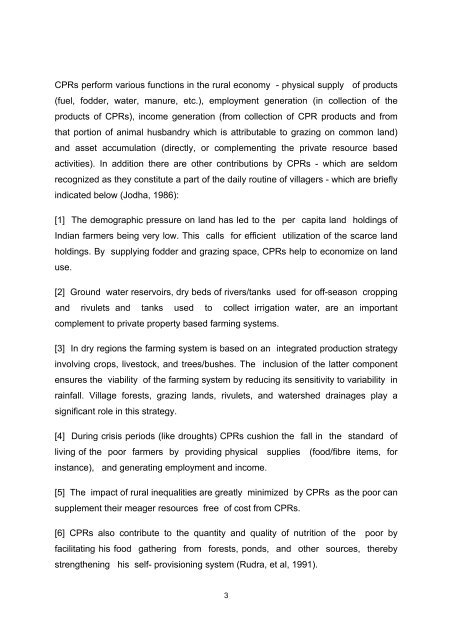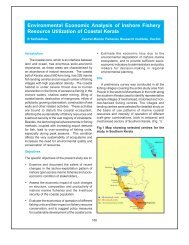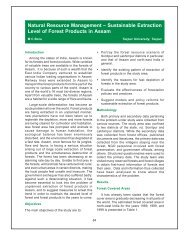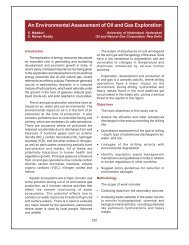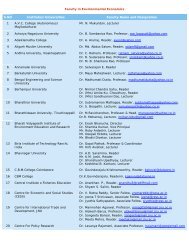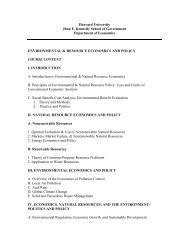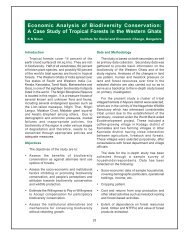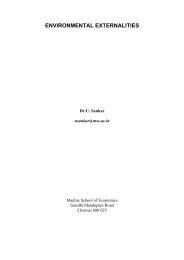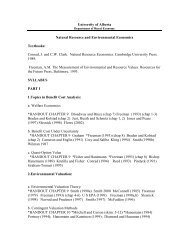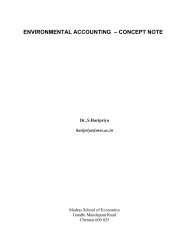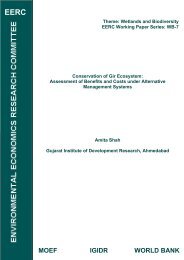PDF 3.08 MB
PDF 3.08 MB
PDF 3.08 MB
Create successful ePaper yourself
Turn your PDF publications into a flip-book with our unique Google optimized e-Paper software.
CPRs perform various functions in the rural economy - physical supply of products<br />
(fuel, fodder, water, manure, etc.), employment generation (in collection of the<br />
products of CPRs), income generation (from collection of CPR products and from<br />
that portion of animal husbandry which is attributable to grazing on common land)<br />
and asset accumulation (directly, or complementing the private resource based<br />
activities). In addition there are other contributions by CPRs - which are seldom<br />
recognized as they constitute a part of the daily routine of villagers - which are briefly<br />
indicated below (Jodha, 1986):<br />
[1] The demographic pressure on land has led to the per capita land holdings of<br />
Indian farmers being very low. This calls for efficient utilization of the scarce land<br />
holdings. By supplying fodder and grazing space, CPRs help to economize on land<br />
use.<br />
[2] Ground water reservoirs, dry beds of rivers/tanks used for off-season cropping<br />
and rivulets and tanks used to collect irrigation water, are an important<br />
complement to private property based farming systems.<br />
[3] In dry regions the farming system is based on an integrated production strategy<br />
involving crops, livestock, and trees/bushes. The inclusion of the latter component<br />
ensures the viability of the farming system by reducing its sensitivity to variability in<br />
rainfall. Village forests, grazing lands, rivulets, and watershed drainages play a<br />
significant role in this strategy.<br />
[4] During crisis periods (like droughts) CPRs cushion the fall in the standard of<br />
living of the poor farmers by providing physical supplies (food/fibre items, for<br />
instance), and generating employment and income.<br />
[5] The impact of rural inequalities are greatly minimized by CPRs as the poor can<br />
supplement their meager resources free of cost from CPRs.<br />
[6] CPRs also contribute to the quantity and quality of nutrition of the poor by<br />
facilitating his food gathering from forests, ponds, and other sources, thereby<br />
strengthening his self- provisioning system (Rudra, et al, 1991).<br />
3


